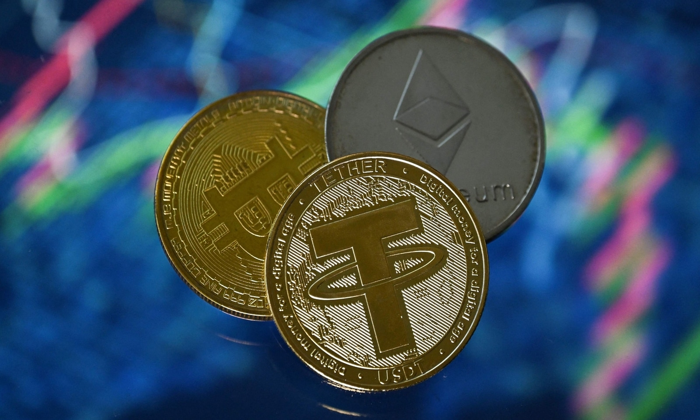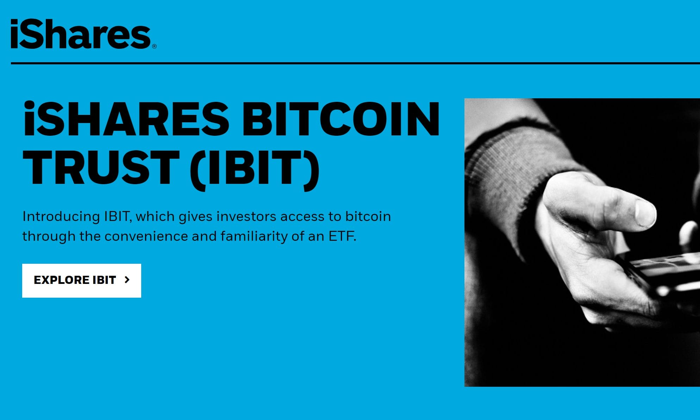In the rapidly evolving landscape of cryptocurrency, Tether stablecoin regulation is taking center stage as it grapples with new political and market dynamics. With the recent delisting of Tether’s USDT from European exchanges, competitors like the Pi Protocol are eager to exploit regulatory loopholes and expand their market share. As stablecoin competition heats up, particularly under the scrutiny of forthcoming stablecoin regulations in 2025, Tether’s dominance is increasingly threatened. The ongoing debate over Tether’s compliance with current laws underscores the need for clarity in the realm of cryptocurrency. Can Tether maintain its lead in the face of both emerging competitors and stringent regulatory challenges?
As discussions around digital currencies intensify, the regulatory framework for Tether and similar assets is becoming crucial. This leading cryptocurrency issuer faces significant challenges as it prepares to navigate the intricate landscape influenced by new legislation and fierce market competition. The implications of Tether’s regulatory compliance in the EU and potentially the U.S. underscore the urgency in creating a balanced approach to digital currency governance. The surge in popularity of innovative stablecoins, including Pi Protocol, signifies a shift in consumer preference towards options that align better with evolving financial regulations. With the spotlight on Tether amidst such changes, the question remains: how will it adapt to ensure its sustainability in an increasingly regulated market?
Understanding Tether Stablecoin Regulation
Tether stablecoin regulation has become a hotly debated topic in recent months, particularly since the implementation of new laws under the Markets in Crypto-Assets (MiCA) framework in the European Union. These regulations are aimed at increasing transparency and ensuring that stablecoin issuers, like Tether, adhere to strict licensing requirements and maintain adequate reserves. As the EU tightens its grip on crypto assets, Tether’s delisting from multiple exchanges has raised serious concerns about its compliance and market accessibility. This development not only affects Tether but also triggers a ripple effect on the overall stablecoin ecosystem.
In 2025, we face an evolving regulatory landscape where Tether must navigate uncertain waters. The push for standardization across various jurisdictions has led to predictions of enhanced scrutiny for stablecoins, which could alter how they operate in both the EU and the U.S. market. Observers believe that the outcome of ongoing discussions regarding stablecoin regulations could shape the future of cryptocurrency, as compliance becomes non-negotiable for leading players like Tether. Therefore, understanding these regulation dynamics is crucial for potential investors and stakeholders.
Tether’s Market Share and Competition
As Tether grapples with regulatory challenges, its impressive market share faces increased competition from emerging players like Pi Protocol. Tether has traditionally dominated the stablecoin market, accounting for a significant percentage of total trading volume and liquidity. However, with competitors currently exploring innovative business models, such as yield-bearing structures, there is a real risk that Tether could lose some of its market dominance. The growth of alternative stablecoins highlights the shifting landscape as these challengers capitalize on Tether’s regulatory woes, thereby increasing their foothold in the market.
Despite these challenges, it’s essential to note that Tether still enjoys a robust user base and a proven track record that could keep it ahead of the competition in the short term. Its substantial adoption, particularly in emerging markets and among institutional investors, provides a buffer against aggressive rivals. However, if competitors like the Pi Protocol are able to lure these users with attractive features and competitive advantages, Tether’s market share could diminish. Keeping an eye on the competitive landscape is critical for understanding its ongoing influence in the stablecoin sector.
Tether vs. Pi Protocol: The Competition Intensifies
As Tether faces down competitors like the newly launched Pi Protocol, the stakes are raised for dominance in the stablecoin market. Pi Protocol aims to differentiate itself with a yield-bearing stablecoin backed by real-world assets, a move that may attract users seeking greater financial benefits. While it operates outside the current framework of strict regulations such as MiCA, it adheres to other regional rules, tapping into regulatory loopholes to establish a foothold in the market. This dynamic offers a glimpse into the competitive strategies that may redefine how stablecoins operate.
On the other hand, Tether’s response has been to exemplify stability and solid reserve management, which are critical in times of regulatory upheaval. Tether’s CEO has publicly addressed the competitive landscape, asserting their commitment to overcoming regulatory hurdles without compromising their established user trust. Despite increasing competition from innovative projects like Pi Protocol, Tether’s long-standing reputation and customer loyalty will play a crucial role in determining its future market position.
The Regulatory Landscape for Stablecoins in 2025
With the new wave of stablecoin regulations rolling out in 2025, Tether is navigating a challenging landscape where compliance will be critical for survival. Legislative frameworks across key markets, particularly in the United States and European Union, demand transparency and rigorous protocols, fundamentally impacting how existing and emerging stablecoins can operate. As Tether’s compliance issues come to light, they will have to pivot their strategy to align better with these regulations or risk losing their competitive edge.
Moreover, the impending regulations are expected to reshape the embrace of decentralized finance (DeFi) products, revealing both opportunities and risks. Firms that may have previously skirted regulatory mandates are now faced with the incentive to legitimize their offerings within established frameworks. For Tether, remaining compliant while maintaining its market share will be a delicate balance that could determine its long-term success against a backdrop of multifaceted regulatory scrutiny.
The Future of Tether Amid Global Stablecoin Regulations
As global and regional regulations continue to evolve, the future of Tether hinges on how well it can adapt to these changing norms. The central question revolves around whether Tether can sustain its market share amid a proliferation of alternatives and stricter governance. Tether’s significant user base and technological infrastructure offer it a competitive advantage, but its response to ongoing legal challenges and market trends will be crucial for its survival in the coming years.
In light of recent developments and the rapid pace of innovation by rivals, Tether must remain vigilant. As competitors enter the fray, it’s not just about keeping current users but also attracting new ones who may be enticed by the unique features that rival stablecoins like Pi Protocol have to offer. The next few years will be pivotal as Tether navigates a rapidly changing environment marked by increasing external pressures and internal adaptations to maintain its standing in the world of digital finance.
Innovative Offerings in the Stablecoin Space
With the landscape shifting, innovative offerings in the stablecoin sector are gaining ground, representing a significant departure from traditional digital assets. New entrants are not only presenting alternatives to Tether’s dominance but are also redefining what users expect from stablecoins. For instance, projects like Pi Protocol are positioning themselves with yield-bearing mechanisms that capture the interests of users looking for more than just mere value stability. These types of incentives can sway user preferences and transaction volumes away from established players.
Additionally, as more projects adopt unique features and ensure compliance with local and international laws, consumer confidence is likely to grow in these new ecosystems. This could lead to a diversification of user bases across various stablecoins as financial choices increase. Tether, in that context, must innovate and reconsider its value proposition to maintain its relationship with existing clients while appealing to new ones—addressing yield, liquidity, and compliance to regain a competitive edge.
The Challenge of Compliance for Tether and Its Peers
The landscape of stablecoin compliance is increasingly becoming intricate, as seen with Tether’s struggles against the evolving regulations in Europe and the United States. The strict adherence to reserve ratios and transparency laws is now a non-negotiable precedent in the stablecoin architecture. For Tether, this challenge compels a reevaluation of operational frameworks to ensure adherence, founded on the philosophy that regulation, albeit burdensome, can also lead to greater trust from users.
Peer competitors are already adapting to these requirements, potentially leveraging compliance as a unique selling point. As they position themselves within the regulated frameworks, players like Pi Protocol could exploit loopholes and capitalize on rapid development cycles. Tether must ensure they are not left behind as the market transitions—this means cultivating relationships with regulators while reinforcing trust among their user base to maintain their leading position.
Tether’s Strategic Moves Moving Forward
As Tether positions itself to contend with intensified scrutiny and competition, several strategic moves are vital for maintaining its industry leadership. First, a robust engagement with both regulators and compliance teams can help Tether stay one step ahead of emerging regulations while fortifying its operational integrity. Initiatives aimed at transparency and user engagement could foster greater trust and loyalty in an era where consumers are increasingly inclined to align with compliant entities.
Moreover, adapting technological innovations is key. Tether must explore opportunities for integrating yield-bearing mechanisms or other appealing features that can compete directly with challenger protocols. By spearheading advances in technology and compliance, Tether has the potential to rob competitors of their allure while reinstating itself as a favored choice among stablecoin users domestically and internationally.
Market Implications of Tether’s Regulatory Challenges
The regulatory challenges faced by Tether are likely to have broader market implications that will extend beyond its immediate control. As Tether accounts for a substantial market share within the stablecoin ecosystem, its stability or instability can influence trading volumes, liquidity, and even price movements across other cryptocurrencies. Any adverse changes, should Tether continue experiencing regulatory setbacks, could prompt a market reshuffling — paving the way for competitors who are ready to capitalize on these weaknesses.
Furthermore, these challenges may encourage regulators to tighten their frameworks across the board, impacting all digital asset players and competitors. As new compliance measures emerge, it creates a cascading effect that could promote more stringent policies across various jurisdictions. The domino effect can lead to greater surveillance and accountability among the entire sector, fundamentally changing how stablecoins function in the financial ecosystem.
Frequently Asked Questions
What is the impact of Tether’s EU delisting on stablecoin regulations?
Tether’s EU delisting has significant implications for stablecoin regulations, particularly under the new MiCA framework. By not complying with transparency and licensing requirements, Tether limited access to its USDT for EU residents, revealing the strict challenges stablecoin issuers face in adhering to evolving regulatory environments.
How does Tether’s market share compare with its competitors amidst new stablecoin regulations?
Despite facing regulatory challenges, Tether maintains a substantial market share, commanding 92% alongside USDC. However, the rise of new competitors like Pi Protocol indicates a shifting landscape where innovative offerings may disrupt Tether’s dominance as regulations evolve.
Will Tether be affected by the upcoming stablecoin regulations set for 2025?
Yes, Tether will likely be impacted by the upcoming stablecoin regulations in 2025, especially as the U.S. Senate advances legislation targeting stablecoins with significant market caps. Compliance with stricter reserve and liquidity requirements may challenge Tether’s operational model and market position.
What challenges does Tether face in the U.S. due to stablecoin regulations?
In the U.S., Tether faces potential challenges from the GENIUS Act, which tightens regulations on dollar-denominated stablecoins. Being based in El Salvador complicates compliance for Tether, possibly opening the door for domestic competitors like Circle to capture its market share.
How is Pi Protocol positioning itself against Tether amid regulatory scrutiny?
Pi Protocol is positioning itself against Tether by offering a yield-bearing stablecoin, backed by real-world assets. This innovative approach, coupled with regulatory advantages in the U.S. market, might allow Pi Protocol to capture users dissatisfied with Tether’s regulatory issues.
What are the potential consequences of Tether’s regulatory struggles on the global stablecoin market?
Tether’s regulatory struggles could lead to fragmentation within the global stablecoin market, creating a divide between regulated and unregulated options. As compliance becomes crucial, many users may gravitate towards regulated alternatives, impacting Tether’s sustained dominance.
Can Tether remain the dominant stablecoin despite growing competition?
While Tether currently leads in market cap and trading volume, increasing regulatory challenges and the emergence of competitive stablecoins like Pi Protocol place its dominance at risk. How Tether adapts to these pressures will be key to its future position in the market.
| Key Points | Details |
|---|---|
| Popularity Surge | Stablecoins are gaining popularity in 2025, especially with a crypto-friendly U.S. administration. |
| Market Share | USDT and USDC dominate with 92% of the market share; Tether’s market cap exceeds $140 billion. |
| EU Regulatory Challenges | Tether’s USDT was delisted in the EU due to non-compliance with stringent MiCA regulations. |
| U.S. Regulations | The U.S. Senate is proposing federal regulations for stablecoins, potentially increasing challenges for Tether. |
| Emerging Competitors | Competitors like Pi Protocol and others are capitalizing on Tether’s regulatory issues. |
| Market Fragmentation Risk | With new regulations, there’s a risk of a split between regulated and unregulated stablecoin markets. |
Summary
Tether stablecoin regulation is becoming increasingly challenging as the company faces mounting pressures from various jurisdictions, notably the European Union and the United States. As Tether grapples with regulatory hurdles and a delisting in the EU, competitors are positioning themselves to seize market opportunities. The ever-changing landscape calls into question Tether’s ability to maintain its market dominance. Therefore, its future amidst regulatory scrutiny and emerging competition is uncertain, requiring careful navigation of regulatory compliance to remain a leading stablecoin.
Tether stablecoin regulation is at the forefront of the evolving digital currency landscape in 2025. With significant market share in the stablecoin sector, Tether (USDT) faces unprecedented scrutiny, especially after its recent EU delisting amid new regulatory frameworks. As competitors such as Pi Protocol emerge, capitalizing on these regulatory gaps, Tether must navigate a complex environment rife with challenges and changing regulations. The introduction of stringent stablecoin regulations in the EU and potential U.S. legislation underscores the urgency for Tether to adapt or risk losing its leading position. This fierce “stablecoin competition” not only tests Tether’s resilience but also raises critical questions about its future amid increasing regulatory pressures on stablecoins globally.
The ongoing regulatory shift surrounding digital currencies presents a compelling narrative for the future of Tether and its competitors. As the landscape of cryptocurrency evolves, terms like “tethered currency management” and “digital asset oversight” become increasingly relevant. With the emergence of alternatives like Pi Protocol, the dialogue shifts towards how established brands can withstand the innovative strategies of newcomers in the stablecoin market. Regulatory developments, especially those anticipated for 2025, will undeniably create a new paradigm in the operations of fiat-backed tokens. This atmosphere of meticulous scrutiny and dynamic competition underscores the need for strategic innovation to maintain relevance in a rapidly changing financial ecosystem.















